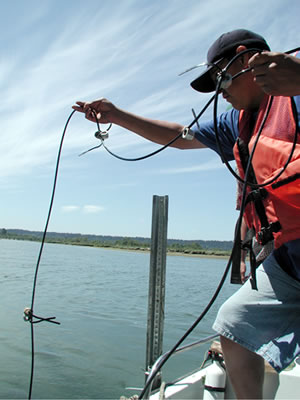Why Monitor?
Tools of Monitoring Science
The science of restoration requires two basic tools (Keddy 2000):

- The ability to manipulate ecosystems to recreate a desired community
- The ability to evaluate whether the manipulations have produced the desired change
This second tool is often referred to as restoration monitoring. Restoration monitoring begins with a strong knowledge of historical communities, the habitat and ecological processes required to support desired communities and clear goals that describe the desired change. Monitoring has been described as the financial equivalent of accounting, and is critical for project evaluation (Lee 1993). For land managers, monitoring also informs their understanding of what resources are present at a site, what conditions favor desirable habitat for trust species, and what effects management actions are having on habitat and/or fish and wildlife populations. In order to increase the likelihood of achieving restoration goals, there remains a great need for monitoring and adaptive management. However, even the most strategically planned restoration program can yield surprising and unexpected results (Zedler 2005). The cumulative effects of restorations may have synergistic, additive, unknown, or immeasurable results (Johnson 2007). Long-term science-based monitoring can be a strong tool in addressing these key uncertainties (Woo et al. 2011).
Benefits of Monitoring:
- tracks trends over time
- provides information on restoration progress
- provides baseline for changing conditions
- program effectiveness
- measure of accountability
- justifies funds spent to restore
- improves understanding of action-based results
- serves to inform adaptive management decisions in a timely manner
- allows interventions when unexpected changes occur
- improves knowledge of coastal adaptation and resilience
- documents effects of climate change
- provides additive learning
- informs the collective restoration community
References
Keddy, P. A. 2000. Wetland ecology: Principles and conservation. Cambridge University Press, 614 pp.
Lee, K. 1993. Compass and Gyroscope: integrating science and politics for the environment. Washington, D.C: Island Press, 255 pp.
